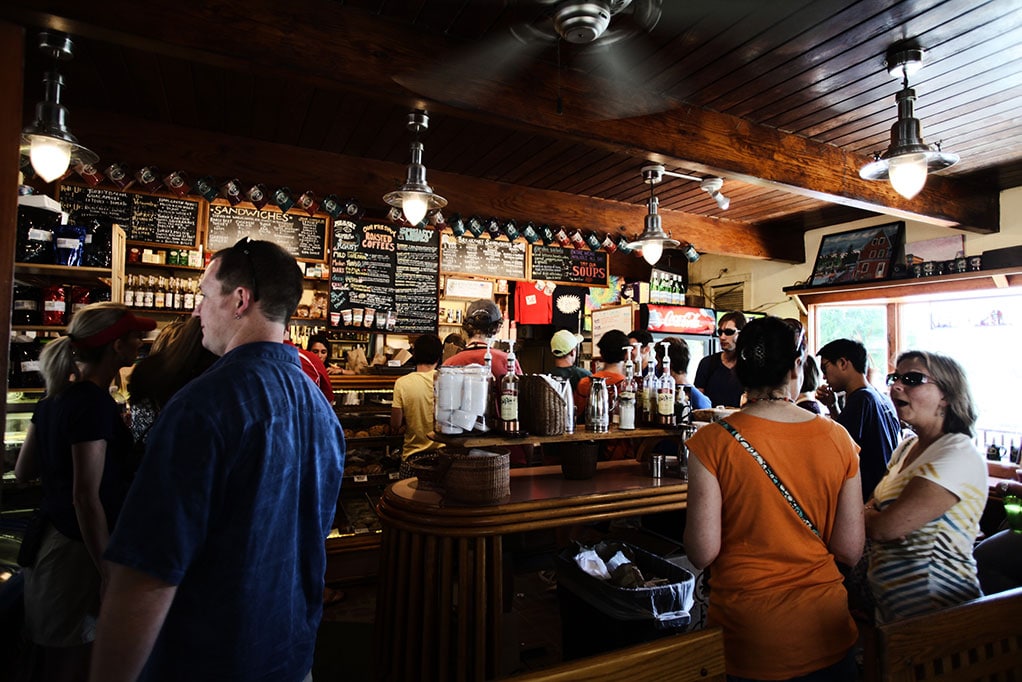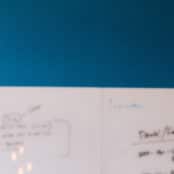
There are three routes to take for work as a designer: freelance, agency-life, and in-house. I’ve worked as an in-house graphic designer ranging from large corporations down to small local businesses. I’ve discovered a few traits of the in-house crew, and learned a few tricks along the way. Here’s some advice I would give to all in-house designers.
Have a drink, be social
I’ve attended various networking and community events for designers in the last few years, and have noticed an absence of in-house designers. I could speculate as to why the majority of designers present are freelancers or from an agency, but I think this is more of an opportunity to encourage attendance from the in-house crew. Design events are clearly an occasion to network, but I also find them empowering. I’m able to converse with friends, peers, and professionals whom I share similar humor, struggles, and aspirations. These conversations can benefit in-house designers in that same sense. By conversing with other designers, you can exchange ideas and learn techniques from each other. For instance, an in-house designer may learn from an freelance designer how to explain why a specific concept is more beneficial than the one preferred by the in-house designer’s manager.
Think differently
Working in-house and maintaining brand standards can begin to feel monotonous and restrictive. I’ve been there. When I’m so bored that I feel like banging my head on my desk because of the same layout, colors, typefaces, and brand elements, I stop what I’m doing and break down the basics. I turn to google and my old textbooks for inspiration. I research the work again, as if I’m starting a new brand book. And I almost always discover a new aspect I want to implement.
Diversify your portfolio
There are a few reasons to freelance when you work in-house. There’s a sense of stability and security when you’re an in-house designer, which will reflect in your portfolio. Working in the creative field asks that you take risks and strive to think differently, which freelancing can answer. As an in-house designer your portfolio will show consistency, but may pose a problem if you’re looking to get hired later on. Having a few freelance projects on the side can help diversify your portfolio, enhance your hireability, and will provide nice pocket change on the side.
Attend a conference
I might be nerdy for saying this, but I enjoy conferences. I always feel inspired after attending, usually because I’ve been introduced to new methods, people, or ideas. Rarely have I left a conference without obtaining new career aspirations, and they generally pertain to my current employer or clients. Many employers will pay for their employees to attend a conference because they know how profitable it can be. I recently had a friend tell me how her boss’ boss now knows who my friend is and speaks highly of her simply because she asked to go to a conference. The worst your employer can say is no, right?
Attend the company gatherings
Typically an in-house designer solely wears a designer hat, and isn’t expected to exercise other talents. But knowledge in other fields can be beneficial. A basic understanding from other departments can easily be acquired by conversing with coworkers. By attending the company parties you have the opportunity to build a rapport with coworkers, which will enhance communication skills. You’ll learn to consider the other departments as you design.
Good design vs. consistent branding
I often wonder which is more important: good design or consistent branding. I’m constantly battling this when I begin working with a new business. My goal is to ultimately solve a problem, and occasionally that results in bad design due to the business’ current branding. The brand’s elements may be preventing the design from effectively communicating information, such as distracting from the logo with a halo or stroke around it.
Hopefully, you’ve been brought on to shift the brand and can remedy those situations quickly. However, a lot of times you’re hired to produce projects maintaining the brand standards, which aren’t always effective and most definitely out of style. My solution is to weigh the options. How much is an element going to stray from the current branding, and is there a compromise? A lot of designers may disagree with me, but nine times out of ten, I feel that consistency of the brand is the top priority.









Comments ( 1 )
Davy
May 4, 2015
Thank you for the great article! For me, this is article is spot on. I'd love to read more about your experiences.
As an in-house designer I completely agree with diversifying your portfolio. Not only because you will indeed increase your chances of getting hired in the future, but also improve your general view on design aspects. You may think that what you're doing as the lead in-house designer is the right thing, but sometimes it's good to step outside the box and look at it from a broader perspective. By doing some freelance work besides your main job, you'll often find ideas and gain knowledge on how to improve your main job. Sometimes you'll discover new design techniques, sometimes you'll find new ways to improve work efficiency and sometimes you'll learn new ways to target your audience.
Adding to that, it's great to feel less pressure when doing some extra freelance stuff. It's usually not as restrictive because you're less often faced with deadlines or specific demands. Let's say you're asked to create a logo, flyers, business cards, a website, etc. for a local nail studio. They often give you 'carte blanche' so you can be very creative.